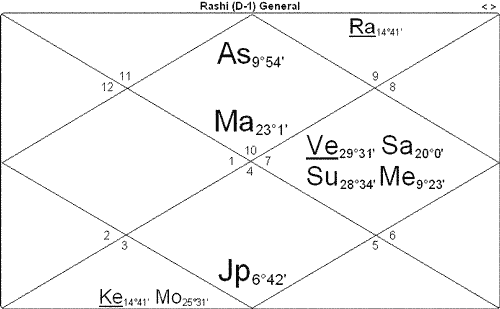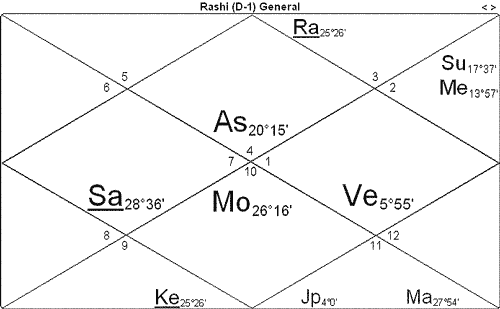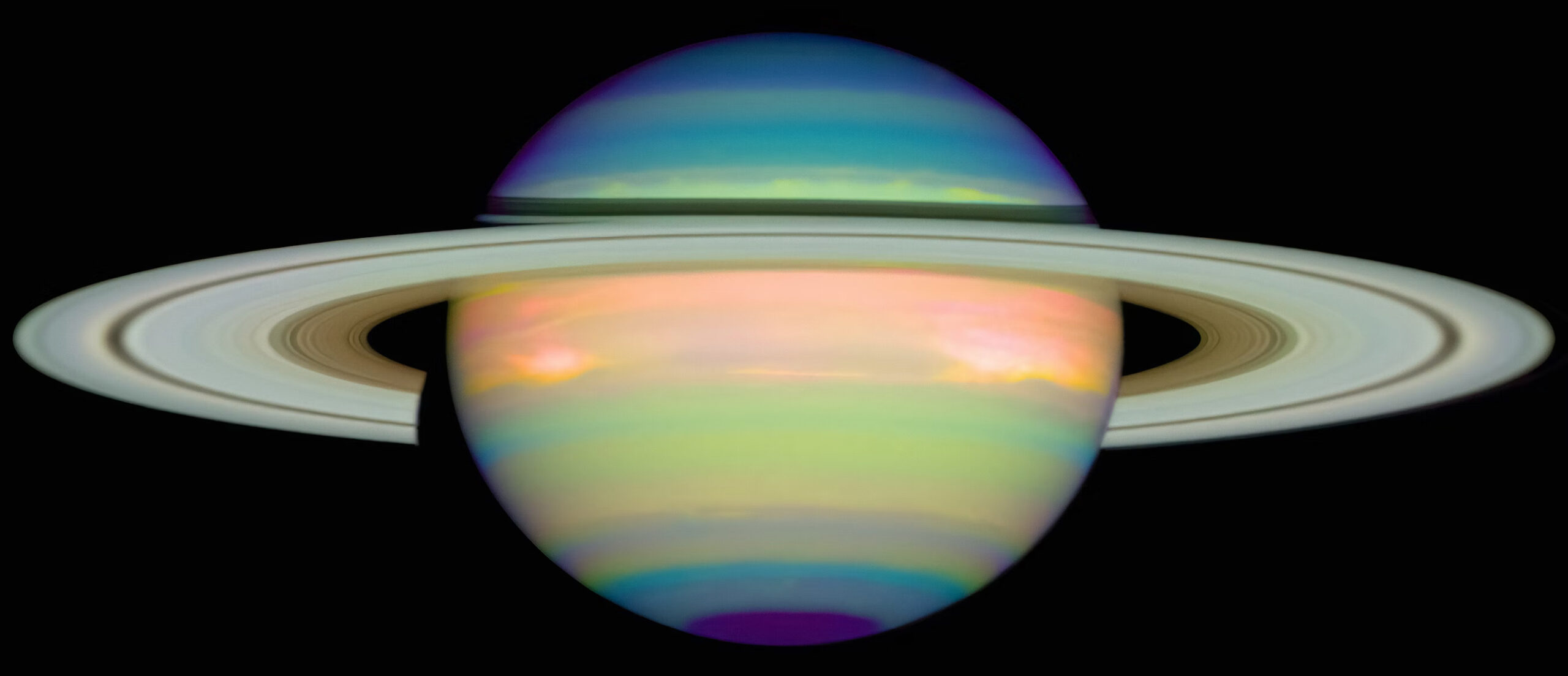Spring | Summer | Fall | Winter | |
2025 | Volume 67 |
| Volume 65 | Volume 66 |
Volume 23, 21 December 2013
“Every charitable act is a stepping stone toward heaven.”
The Winter Sky 2014
In early January, we will get the best view of Jupiter as it is fully retrograde (on the other side of earth from the Sun) and therefore very bright. The fullest point is reached on January 5. You can see it setting as the Sun is rising but it will also be very bright in the midheaven at night. Jupiter also won’t be too far from the twin stars that make up Punarvasu known as Castor and Pollux. It will be closer to Castor which is at 26 degrees 23 of Gemini.
And speaking of retrogression cycles, as this newsletter reaches you, Venus will be entering its retrogression phase. Venus goes retrograde at an interval of around every eighteen months and it is a relatively short cycle of around 45 days. Therefore this relatively rare phenomena is highly valued when it shows up in a birth chart or prashna. As the Venus retrograde cycle ends at the end of January, Mercury will be retrograde in February (7 to 27). Unlike Venus, Mercury is retrograde three times a year and is therefore constantly changing its speed. Not to be left out, Mars and Saturn will start their retrograde cycles in March. Mars will be retrograde from March 1 to May 19 and Saturn from March 2 to July 20. Please note that Jyotisha and Western Astrology have differing viewpoints on retrogression.
On January 31, Mercury will be at its maximum distance from the Sun on the East (called maximum elongation). Mercury is not easy to see but you might catch a glimpse on the Western horizon just after the Sun goes down. On March 14, it is also at maximum elongation but this time to the west and you will be able to see it just before sunrise along with spectacular Venus as the morning star rising well before the Sun because Venus too is at its maximum elongation phase of its cycle.
Venus is transiting Capricorn and around mid March, it will be close to the marker star of the nakshatra of Shravana. In fact, on the 18th of March it will be exactly on the same degree of longitude as the marker star of Shravana. Shravana, however, is much further north of the ecliptic - in fact the furthest north of any nakshatra marker star. It is know in the Arabic system as the great Altair (Alpha Aquila). It is the star of the eagle and the twelfth brightest star in the night sky. It is well worth getting up a little before sunrise to catch this beautiful show of Venus the shimmering morning star close to the degree of Shravana with Mercury as another morning star trailing after the glorious Venus. It will be visible for much of March with best views the week starting March 14.
Upapatti and the Game of Telephone
Some time ago I wrote a series of articles detailing six golden keys for understanding how shastra signals the importance and priority of basic precepts. Upapatti is the sixth of these useful guidelines. Upapatti is defined as settled tradition expressed in ascertained, substantiated and demonstrated conclusions. It sets the bar necessary to understand and discriminate when something gets introduced which is an illogical or highly subjective interpretation. Upapatti is violated when principles are taught as if they are part of established tradition when they are, in fact, “newly minted” and/or even contrary to what is in the majority of the shastras. The result is that the integrity of the original principles is weakened leading to distortions and misinformation.
The most common current occurrences of this problem involve the teaching of distinctly Western astrological principles as if they were foundational principles of Jyotisha. This is NOT a judgement of the proud tradition of Western astrology or its practitioners. The problem is that the loss of distinction between Western astrology and Jyotisha especially in the training of unsuspecting students does not support the unfoldment of the knowledge in a way that properly cultivates the judgement of the budding Jyotishi.
Also, there have been instances of disrespect for the tradition from those who don’t understand either the language in which this knowledge is embedded or the way the principles get unfolded. Statements such as “this or that principle appearing in shastra is worthless” appear in books written by Westerners who studied Jyotisha for a relatively short time and mainly through reading books written by other Westerners in the same boat. Often they have never trained rigorously with a master of the tradition or learned Sanskrit themselves in order to understand how the often cryptic statements in shastra are to be teased apart and understood. It is hubris for someone who has worked with the subject “second hand” to represent himself or herself as an expert and make such statements about a tradition of knowledge that has persisted for several thousand years.
Another instance of violation of upapatti that has recently come to the fore due to modern communication takes the form of putting forth principles that appear nowhere else and couching them under the “protection” of a closely held family parampara (oral tradition). In a subject like Jyotisha, there is definitely room for brilliant insights and unique viewpoints such as the riveting work of K.S Krishnamurti. However, his techniques rest squarely on repositioning time honored principles as opposed to bringing in notions that have never appeared anywhere else in Jyotisha shastra or the tradition at large. Bona fide Jyotisha principles will have at least some basis in long standing established knowledge, traditional stories, general memories and understandings of various groups of indigenous people even if they are family secrets - just as a secret family recipe for dhal will still have a majority of known ingredients which have been put together in a fresh and surprising way by the addition or alteration of some special ingredient. Dhal will never morph into cream of cauliflower soup!
We live in a very special time when technological advancements can foster tremendous blessings or be the vehicle for the wide spread distribution of opinions parading as knowledge. We see this in all areas of our lives - politics, medical advice, diet recommendations etc. All of us need to know our sources and make wise choices regarding what information we consider to be reliable.
Exaltation: A Supreme Planetary State
This is a good time of year to talk about exaltation and radiating light as that is the mood all around us. Exaltation is the most vaunted of one of the sets of descriptions used to evaluate a planet. These sets are known as avasthas.
One of the most important sets of avasthas describes where the planet is on a scale going from very high dignity down to a state of being quite undignified. Much skill is required to interpret avasthas in an individual horoscope but none the less, some basic understanding of the tools is always interesting.
The gold standard is a state known as uccha or exaltation. Shastra tells us that a planet that is uccha is radiating light. It is in an excited state. Picture yourself having rented a villa on the Mediterranean. When you get there and open the door into that amazing property, you feel “zingy” and are operating at a higher octave from your usual self at home in your pajamas with your feet up on your own coffee table. A planet that is exalted is the kind of ice cream that has every treat thrown into it - hot fudge, marshmallow, nuts, cherries etc. etc. It is a state that is over the top and highly coveted.
An uccha planet is very powerful and enabled. But is it is beneficial for the native? That determination is too complicated to tackle here, but one thing that tends to be true is that exalted grahas often think well of themselves and highly value what they represent in a chart.
One should not be overly enthusiastic regarding an exalted planet in a chart until it has been carefully scrutinized. An exalted planet will most likely be consequential in the life of the native and the themes it represents will tend to be important. However, to be fully expressed, the planet must exert a sufficiently consistent influence on the native by being on “the center of the stage” at significant times in the person’s life. I am speaking, of course, of the wheel of time known as the dasha periods.
Here are a couple of examples:

This is the chart of the former Secretary of State Condoleezza Rice. She has three exalted planets - Mars, Saturn and Jupiter. This is an extraordinary number to appear in one chart - especially in the way they are distributed. Note that Saturn is the lord of her ascendant. I think it is safe to say that career was the focus of her life and it played out in a most exalted and public way. She certainly thought well of herself and the job she did despite any opinions to the contrary which may have been due to a blind spot or lack of humility.

Unlike Ms. Rice, Marilyn Monroe’s exalted Saturn represented others in her life and specifically partners. Her two marriages were to very prominent and accomplished men - Joe DiMaggio and Arthur Miller. And then there was the probable affair with President Kennedy. Note in her chart that others in her life (represented by the 7th house) were more powerful than she was and consequently she was overwhelmed, controlled and ultimately destroyed by these power brokers.
Media Corner - Remarkable art of the Shadows
One of the most stunning performance art groups that I have ever seen was highlighted on the unlikely venue of the X factor. Attraction is the name of a Hungarian shadow theater group who have taken the art of working with shadows to the most emotionally moving heights. There are several videos available but I have chosen the one that had me literally in tears. I was not alone. The oft cynical originator of the X Factor clearly wiped away his after this semi final performance.












